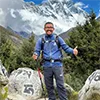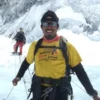What is the Altitude Sickness and Prevention – There is a chance of getting high-altitude sicknesses while ascending over 2500 meters, such as acute mountain sickness (AMS), high altitude cerebral edema (HACE), and high-altitude pulmonary edema (HAPE). The primary symptom of acute mass syndrome (AMS) is headache, which usually appears 6–12 hours after a rise in altitude and is followed by loss of appetite, dizziness, nausea, discomfort, and sleep problems.
Reduced awareness, a moderate fever, and, if left untreated, the possibility of a brain coma and death are the hallmarks of this deadly illness known as HACE. Dyspnea, lack of energy, and dry cough are the initial signs of HAPE, which is followed by breathlessness, rales, cough, anemia, and pink, foamy phlegm. In altitudes over 3000 m, HAPE often appears two or more days after you reach the mark.
The risk factors for altitude sickness include rapid ascending, prior experience with altitude sickness, youth, female trekkers, and the presence of additional conditions like migraines. Furthermore, several research also took smoking and a large body mass index (BMI) into account.
It’s fascinating to note that as transportation and other infrastructures have developed, these locations have become more accessible. However, research conducted in one of the trekking regions found that the tendency to ascend heights quickly has also increased the danger of altitude sickness.
When traveling over 3000 meters, it is advised to avoid increasing sleeping altitude by more than 1500 meters per day and to take a rest day every three to four days to allow for acclimatization.
Before attempting your ultimate ascent, it is advised to take a few spare days to relax at the middle and then high heights. If possible, try the main event after at least three days of acclimatization (or easy day hikes) above 8,000 feet.
You should walk at a leisurely pace. Data indicates that young, physically healthy people are most likely to suffer from altitude sickness as they tend to trek the route faster than the rest of the team.
Don’t overdrink; nonetheless, sip plenty of water. For most individuals, between 2 and 4 liters per day is sufficient at higher altitudes. Steer clear of alcohol and sleeping medications. Consult your physician about high-altitude medications if you’re concerned about sleeping problems.
Altitude sickness can occur even after following preventive measures. In case you do get altitude sickness, our guide will descend you to lower elevations and provide you with the necessary medications to minimize the effects. If you feel better afterward, you can resume the trek but if you are unable to continue the trek further, you will be rescued via helicopter.







